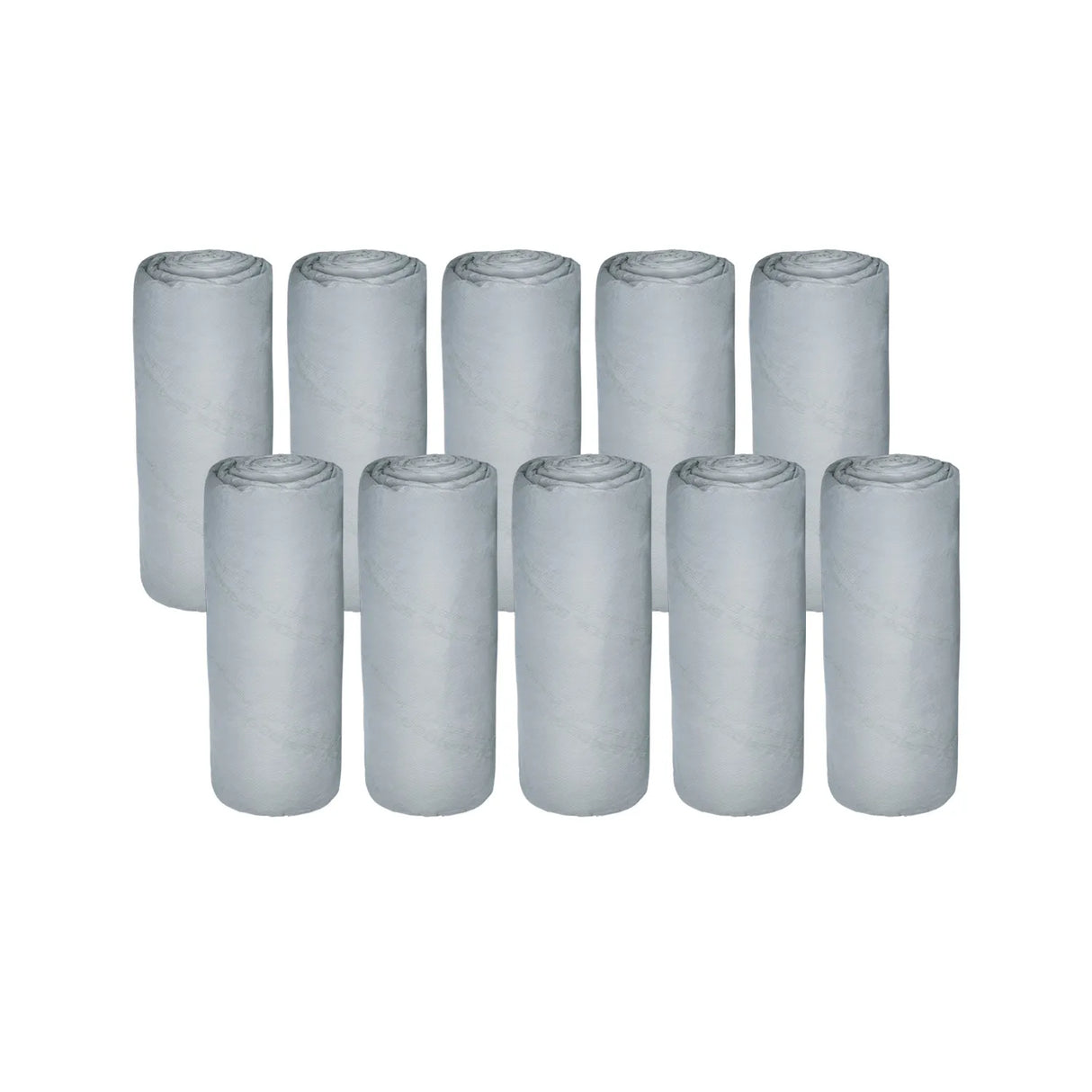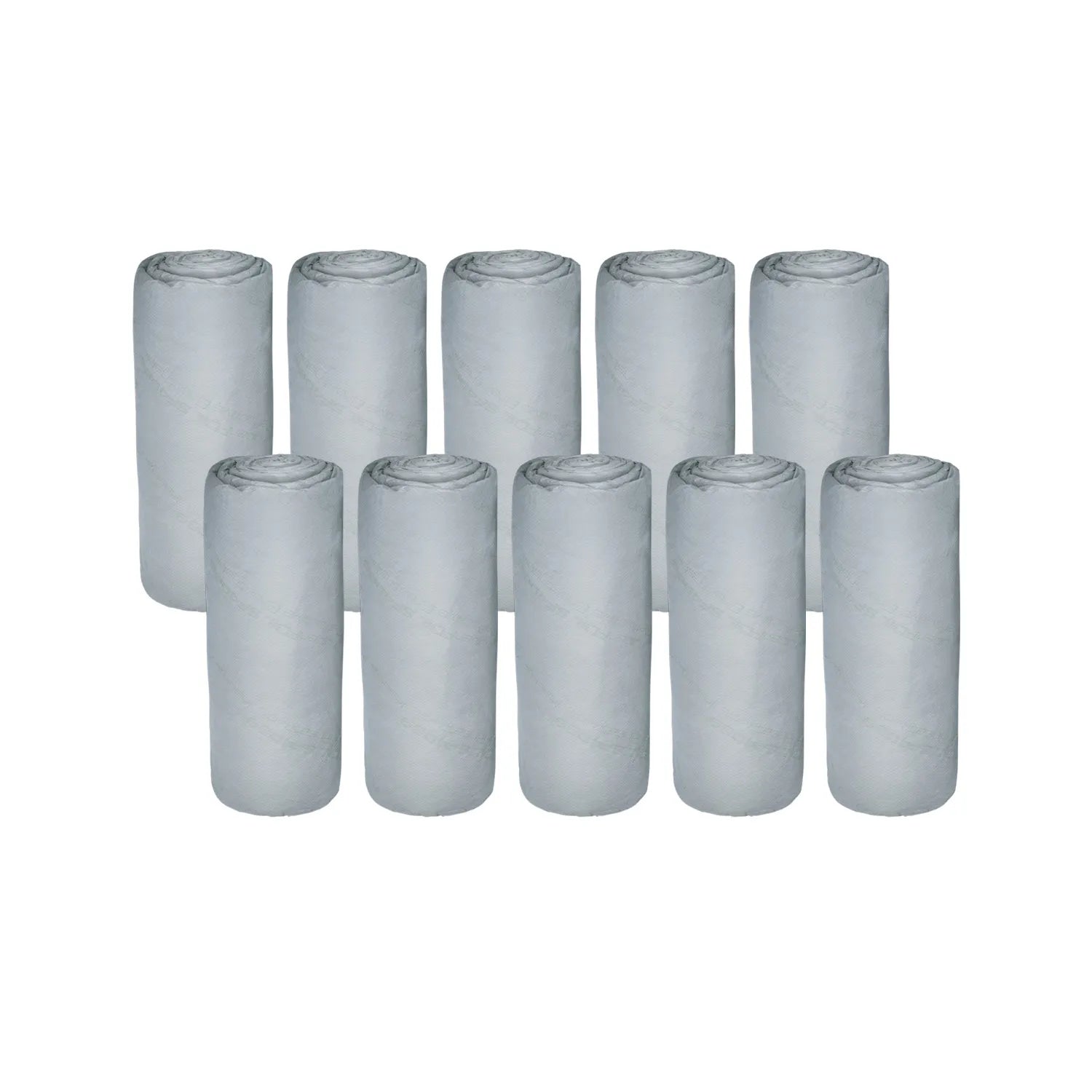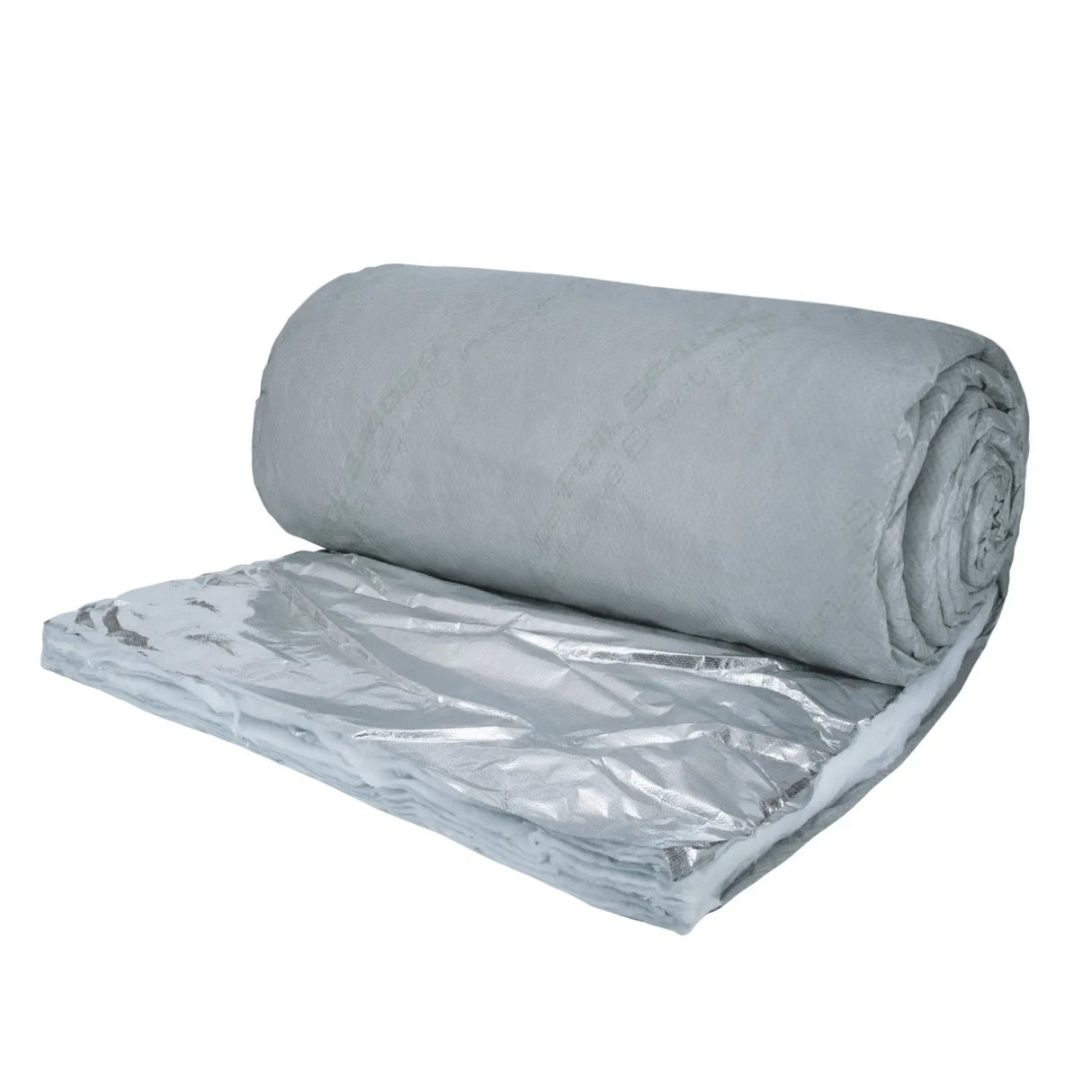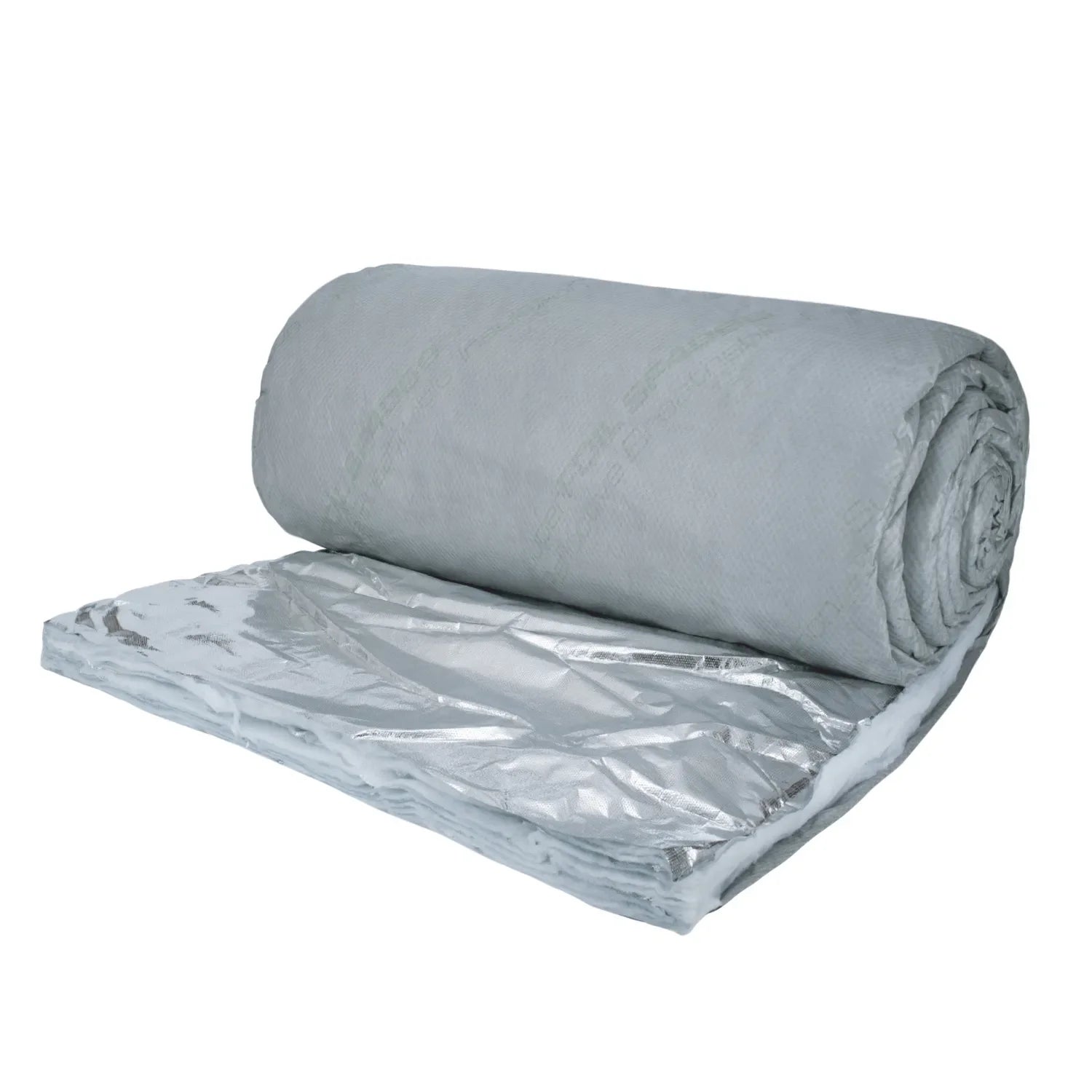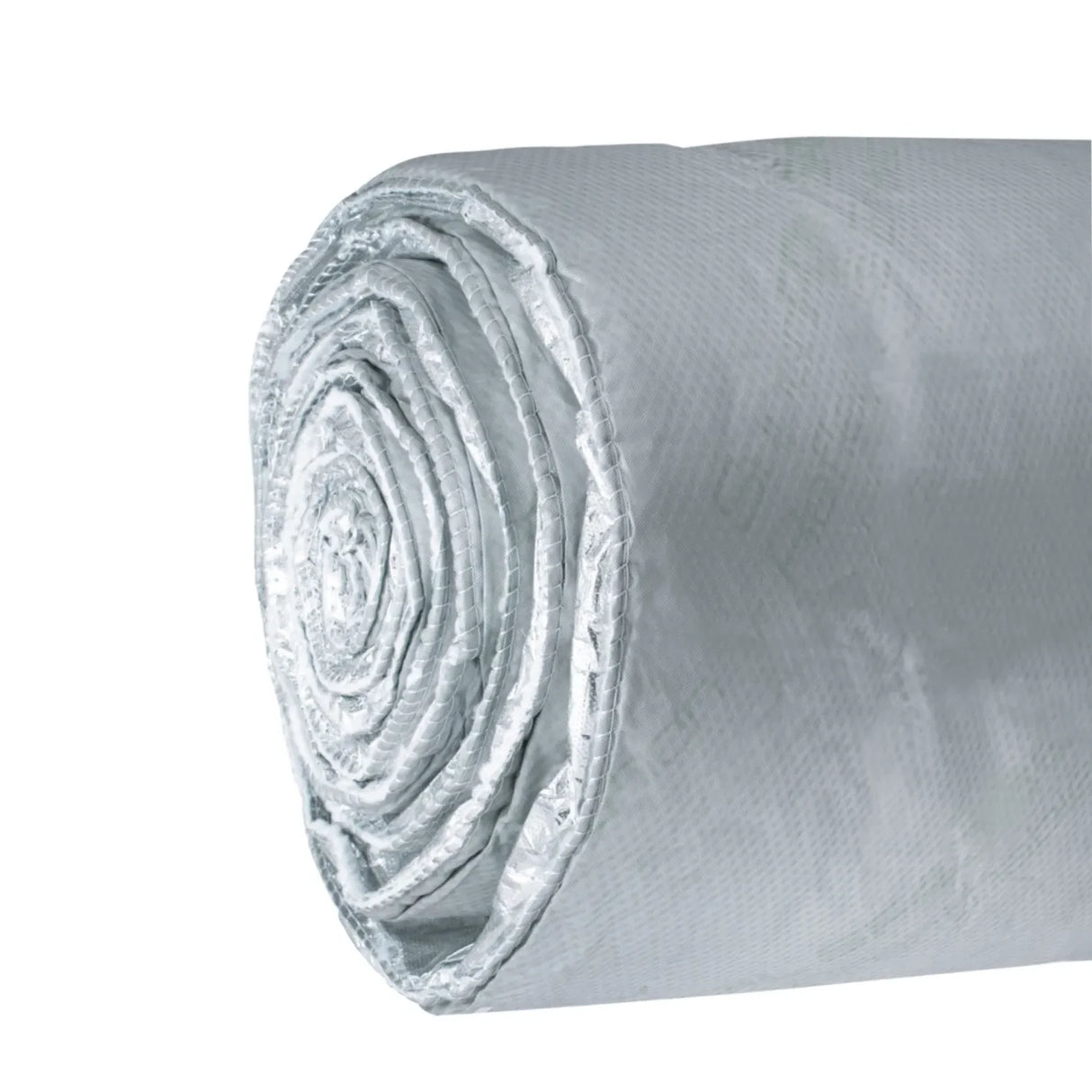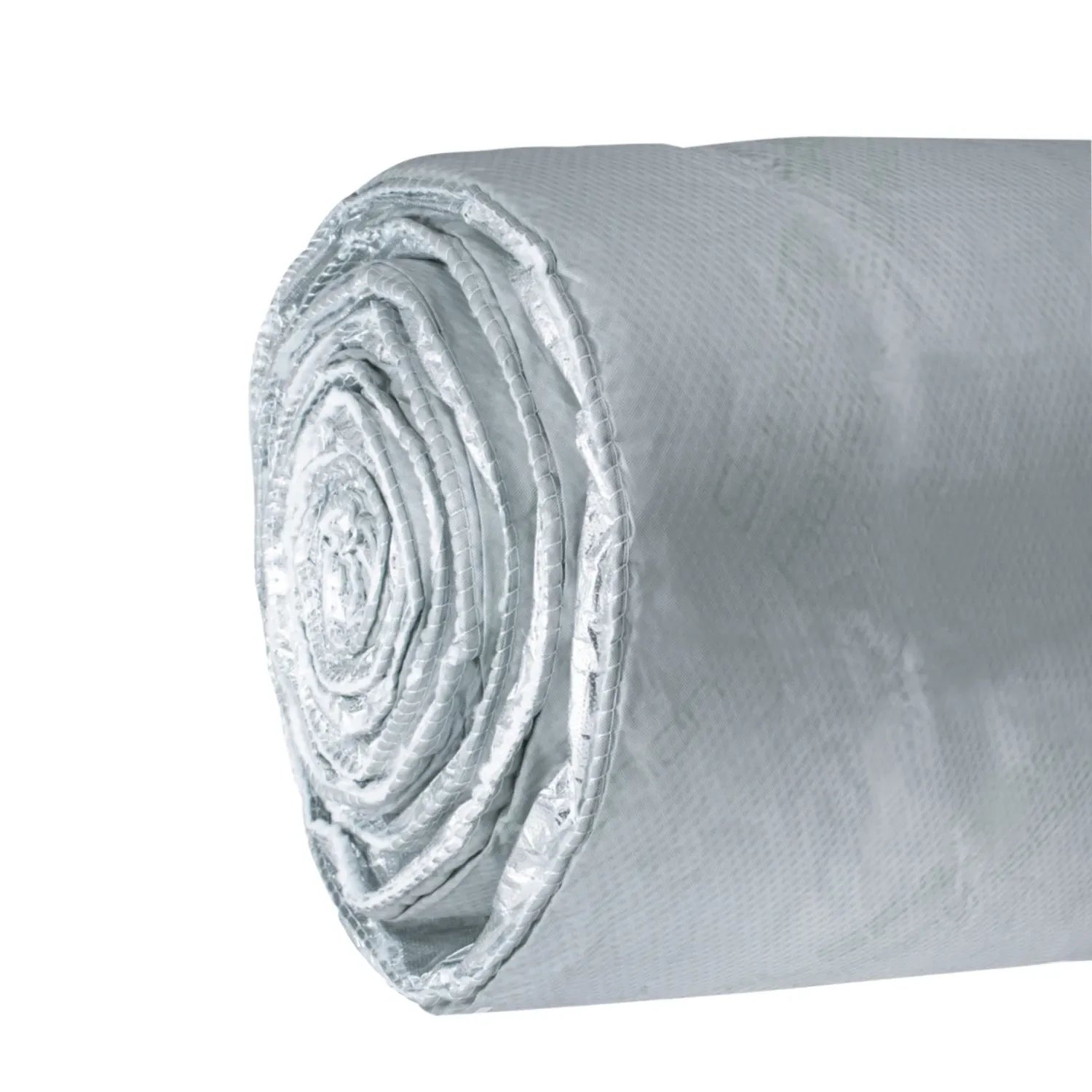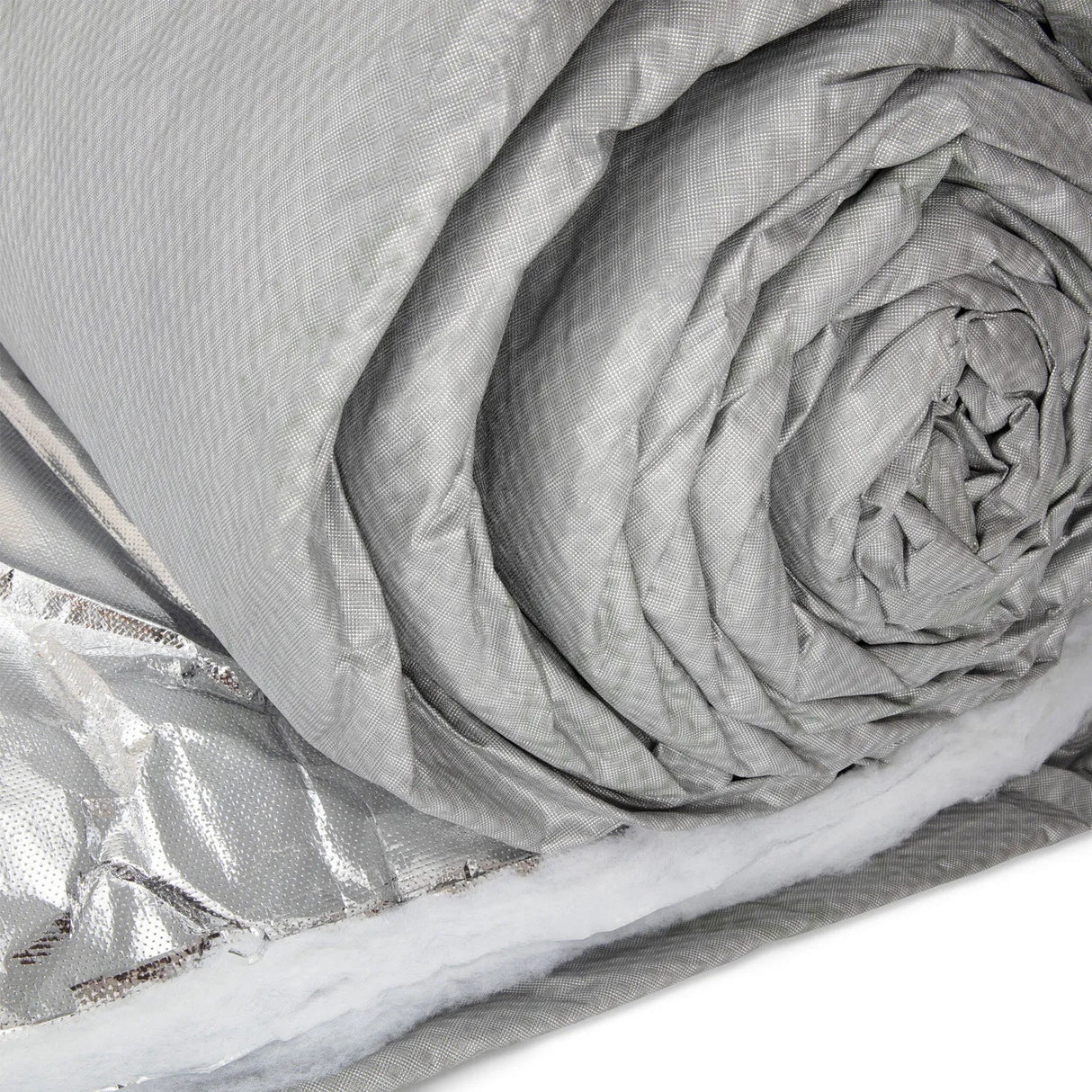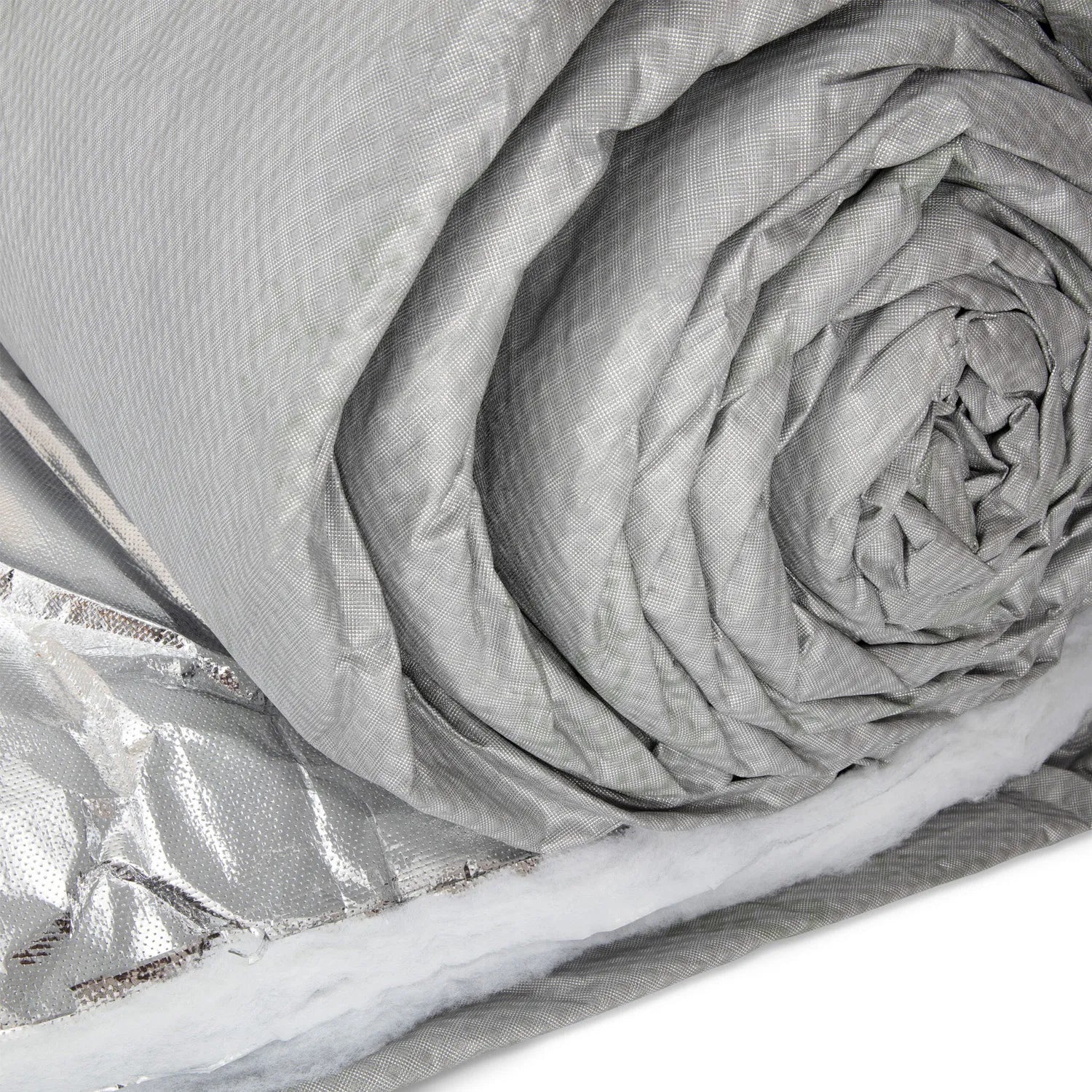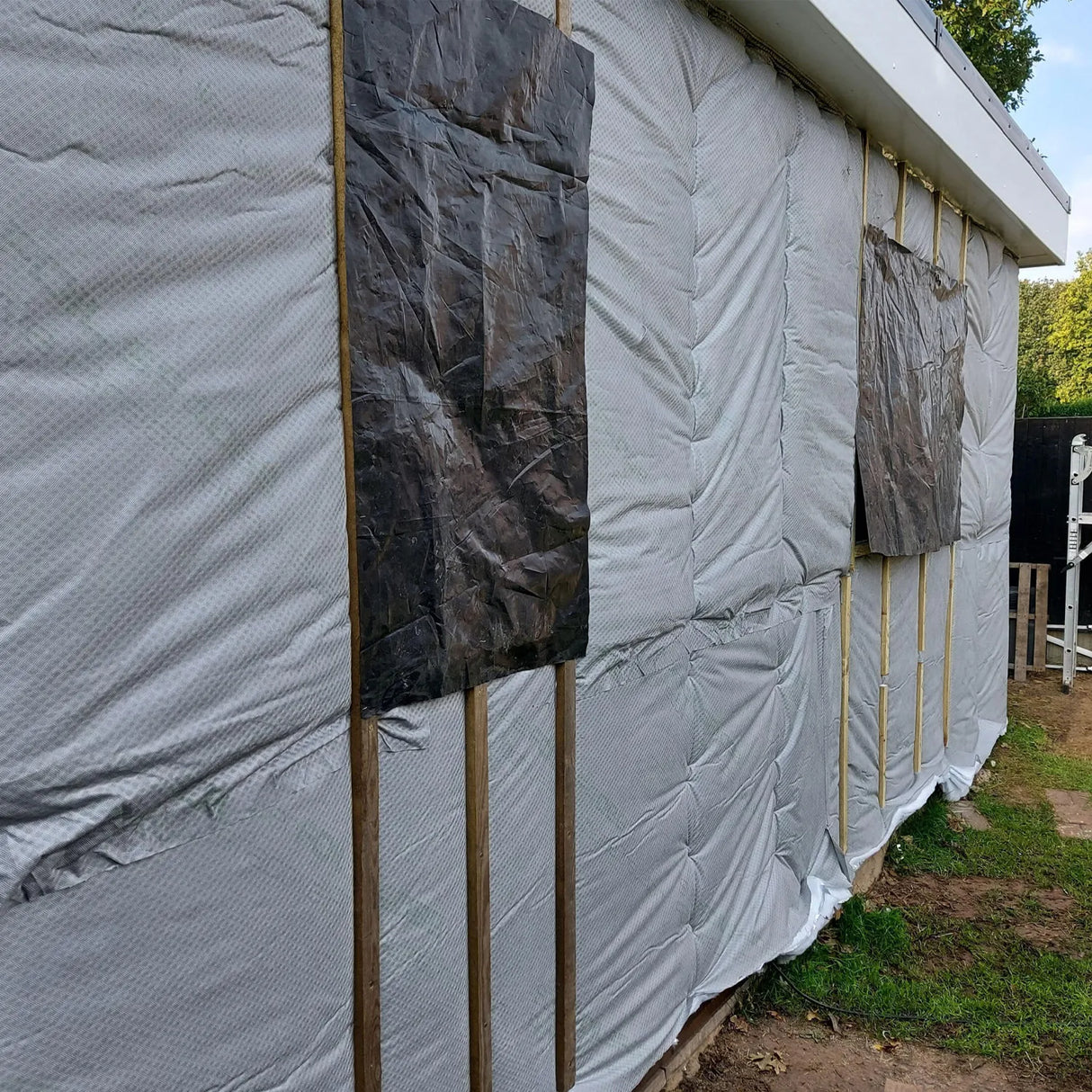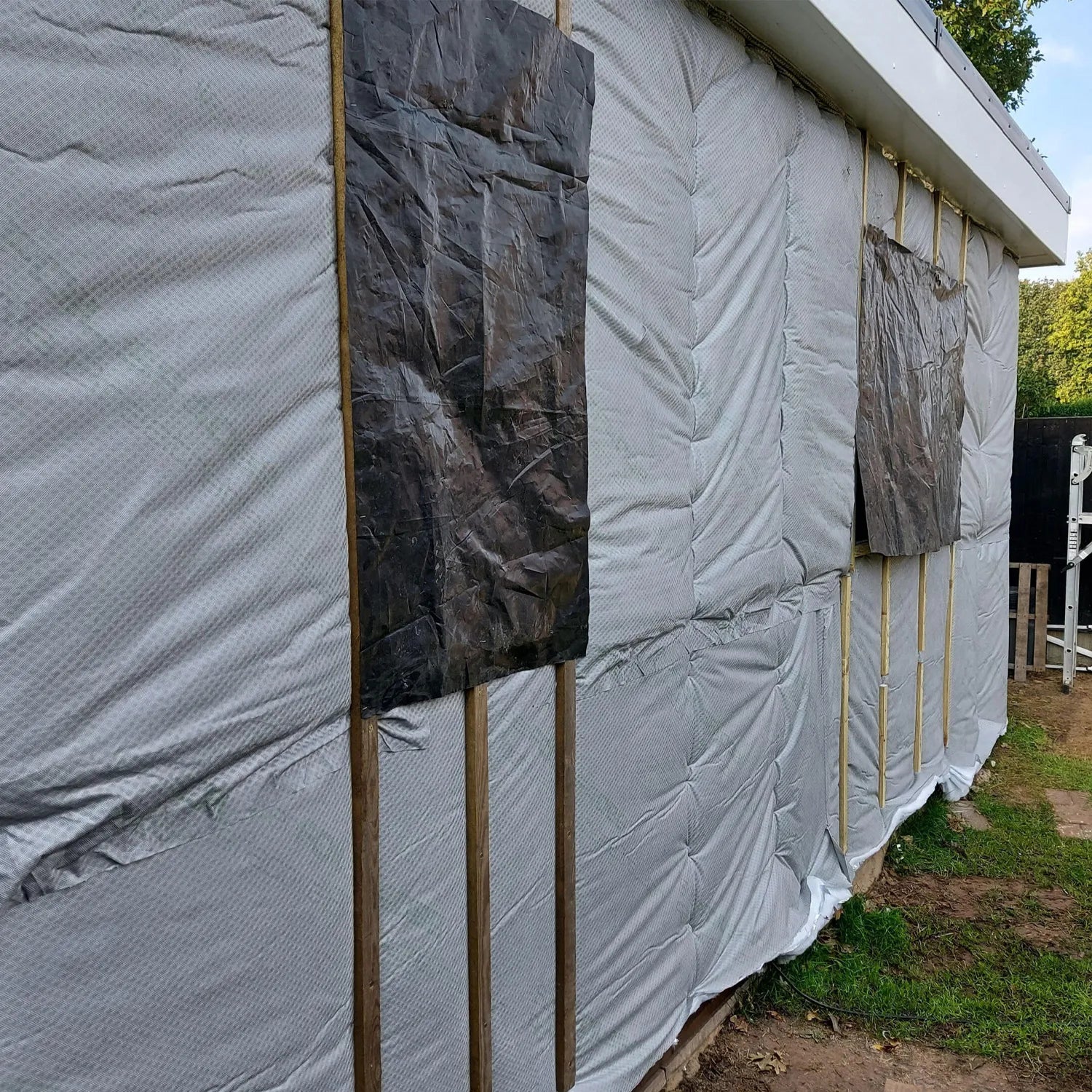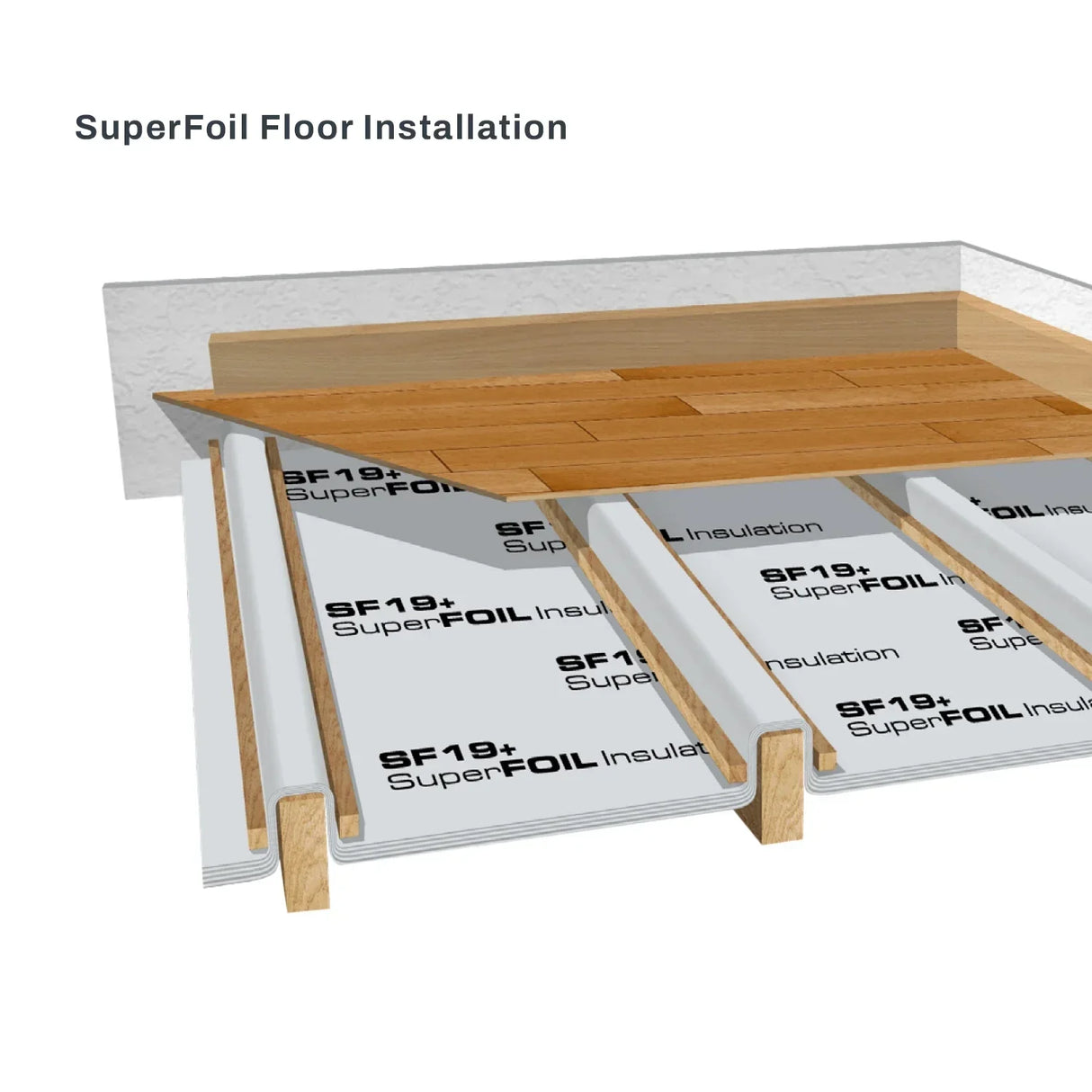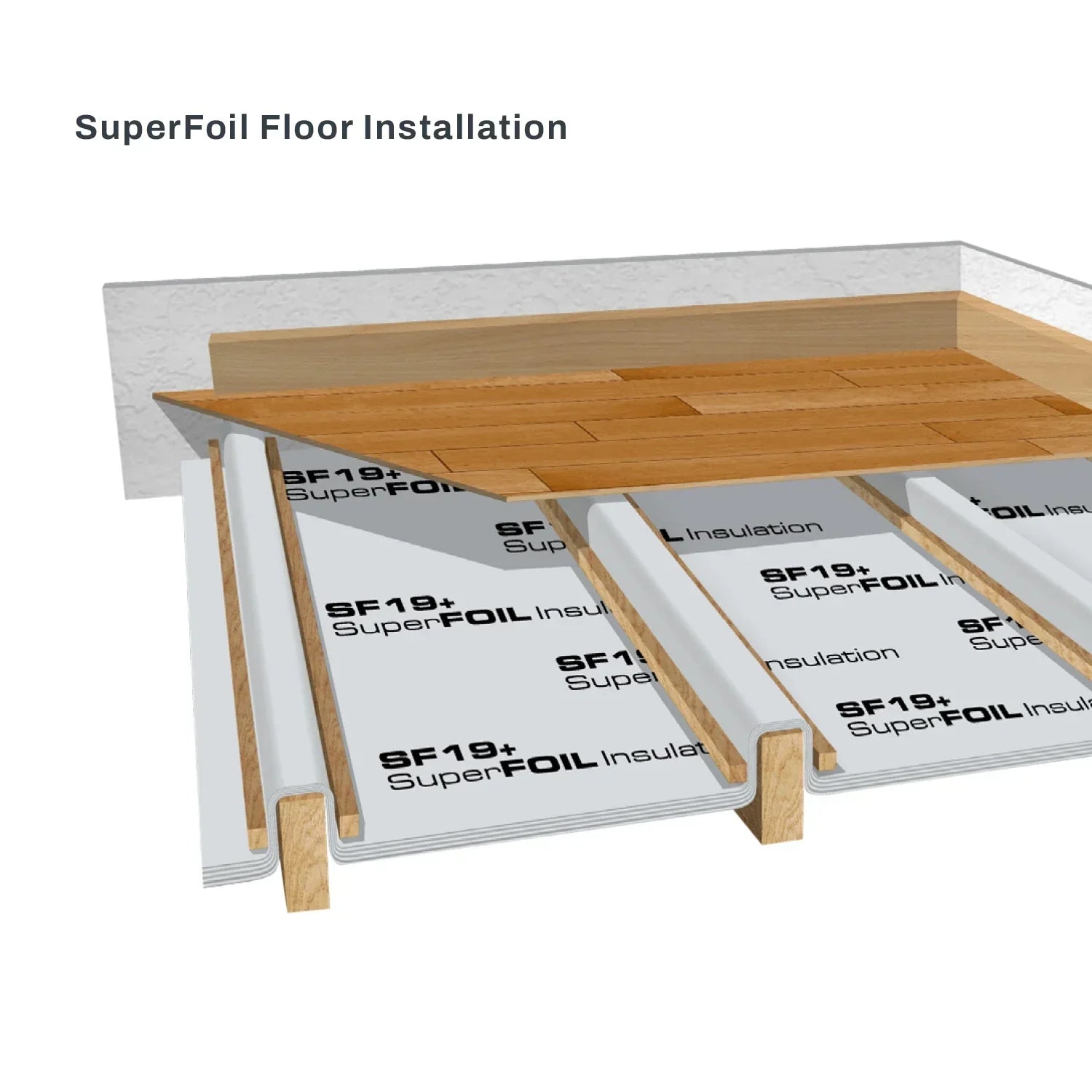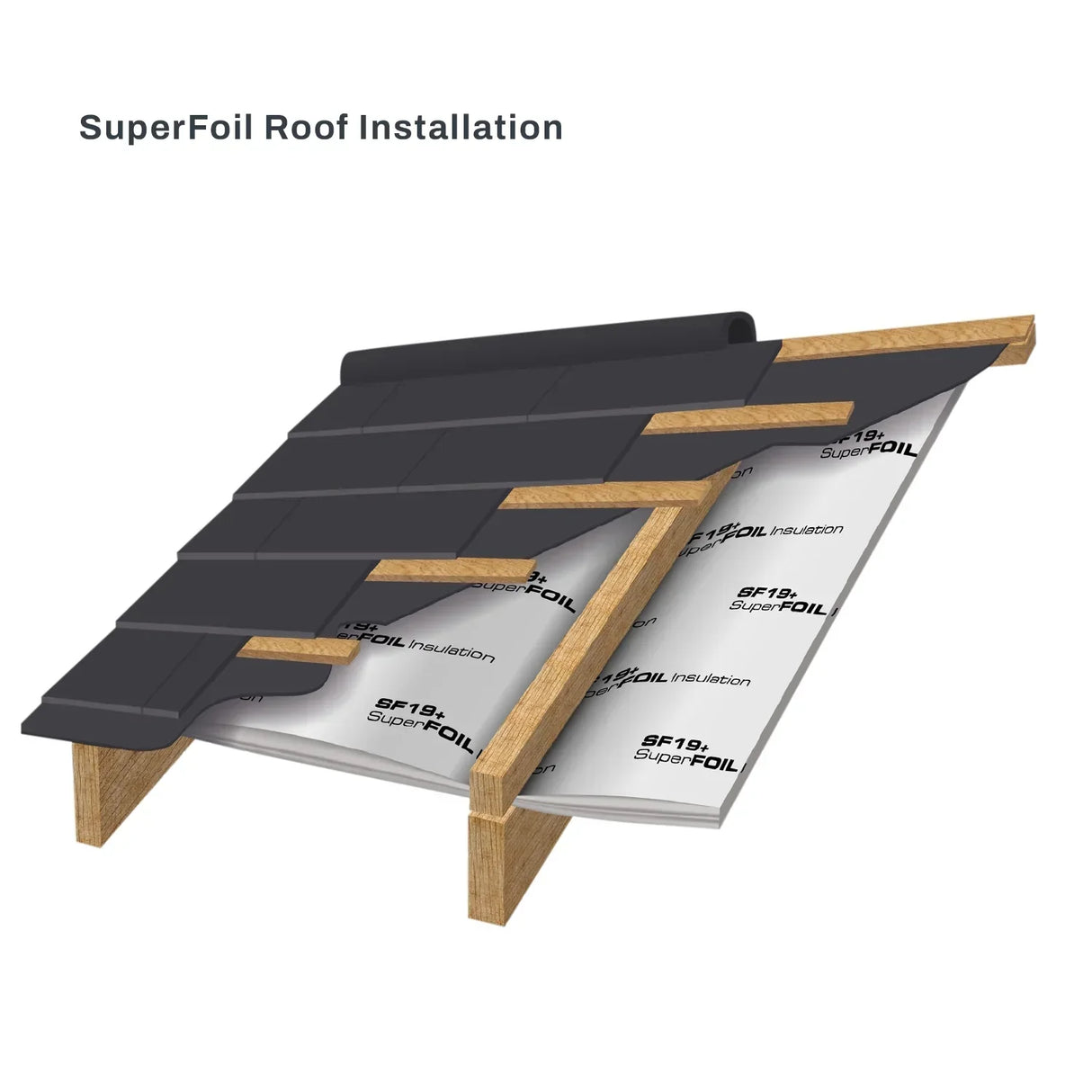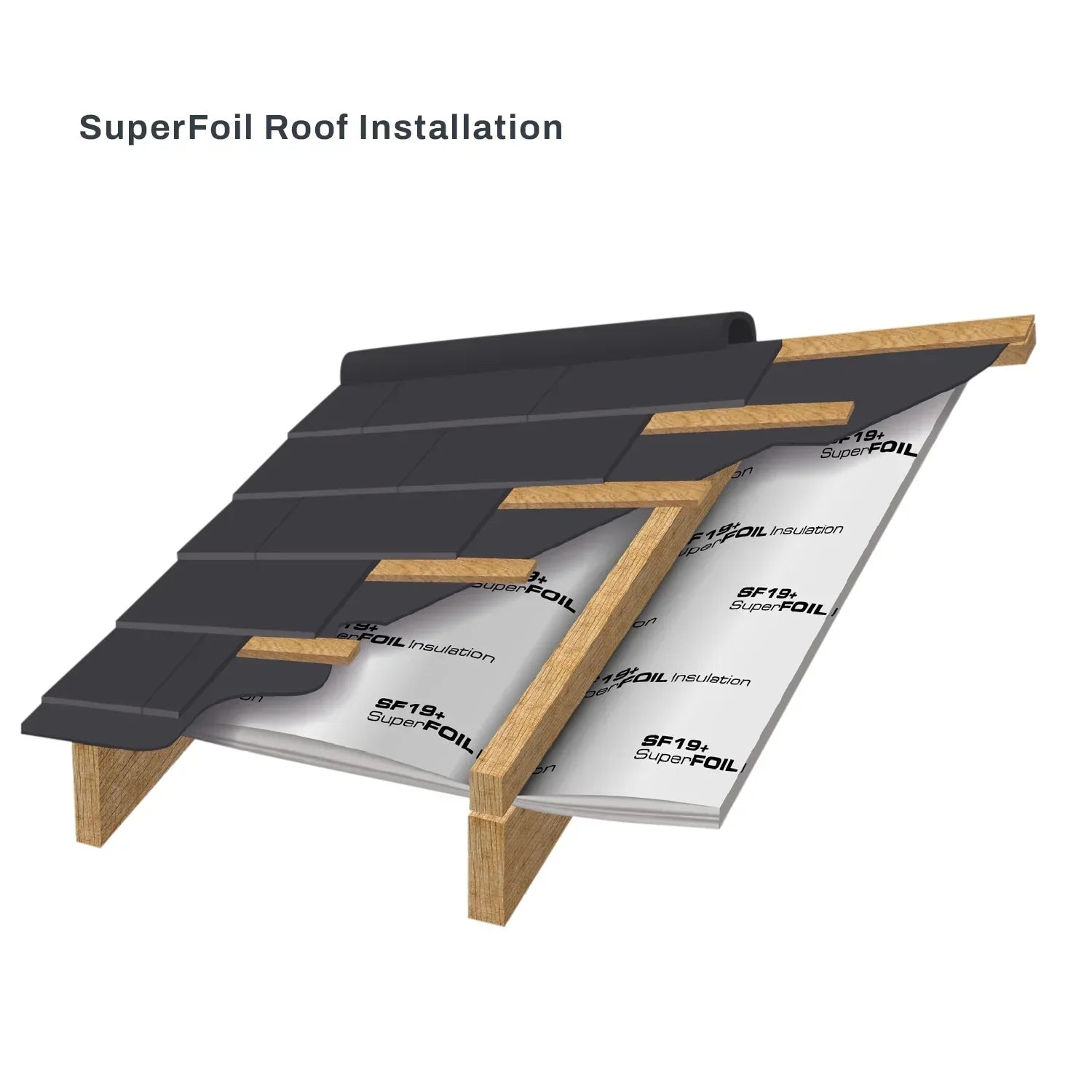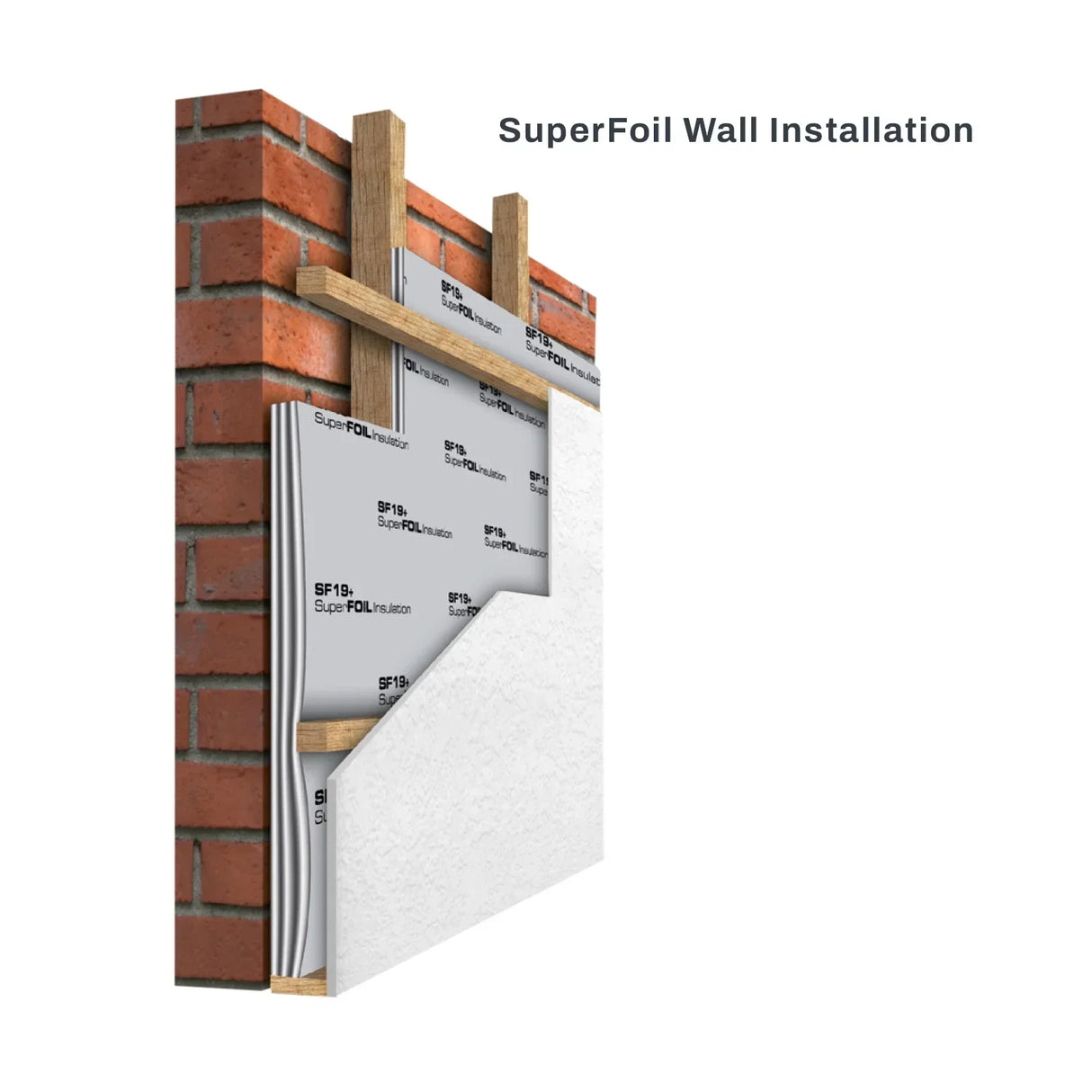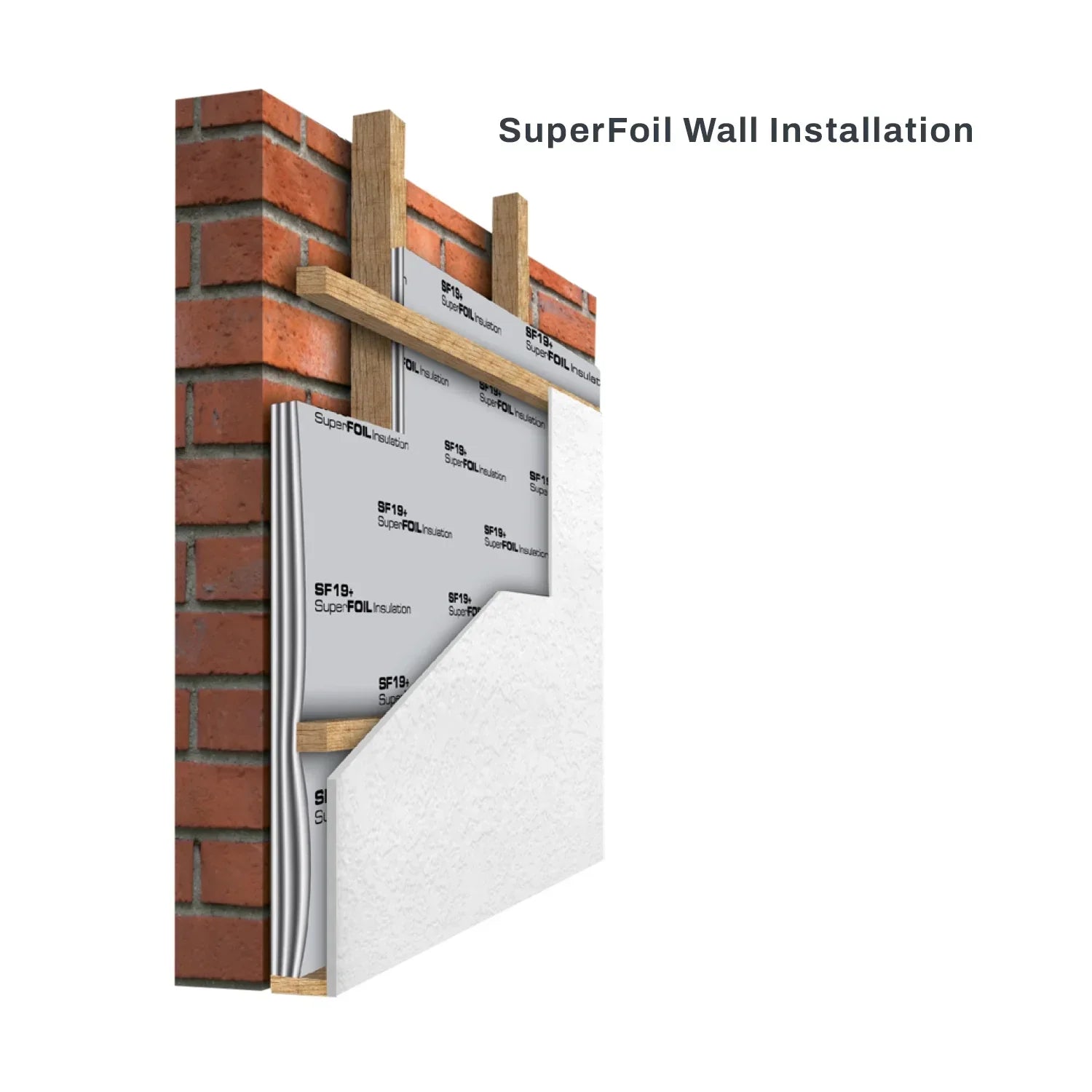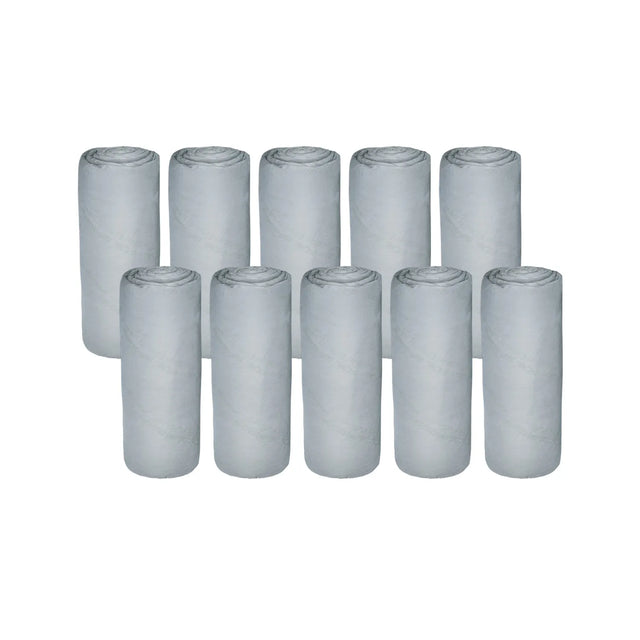SuperFOIL SF40BB Breathable Multifoil Insulation - 1.5m x 10m - pack of 12 (180m²)
SuperFOIL SF40BB Breathable Multifoil Insulation - 1.5m x 10m - pack of 12 (180m²) is backordered and will ship as soon as it is back in stock.
A pack of 12 rolls of SuperFOIL SF40BB - ideal for retrofits, extensions and conversions. SuperFOIL SF40BB is an even higher performance multi-foil insulation and breather membrane than our SuperFOIL SF19BB, composed of layers of perforated Aluminium Coated Reflective Foil PET, thin Loft Quilt, reflective foil and reflective-coated breather membrane to create a highly effective insulation for use in Roofing, walls and flooring. A 3-in-1 design, SF40BB Breathable Multifoil insulation functions as foil insulation, a breather membrane and a radiant barrier. SuperFOIL SF40BB is made from up to 40% recycled materials and is fully recyclable at the end of its 50+ year lifespan.
- Achieves an R Value of 3.67 in Roofs and 3.98 in walls
- No need for additional Breather Membrane
- Ideal for New Builds, Extensions and retrofits
- Simple installation with basic tools and supplies
- Space-saving size with effective insulating properties
What is Multi foil insulation?
Multi-foil insulation is a type of thermal insulation material composed of several layers of reflective foil, often with additional materials such as foam or bubble wrap sandwiched in between. The reflective foil layers work by reflecting radiant heat, preventing it from entering or escaping a building, thus helping to maintain desired temperatures and improve energy efficiency. This type of insulation is popular for its lightweight and flexible nature, making it easy to install in various construction applications, such as roofs, walls, and floors. Multi-foil insulation is known for its high thermal performance and is often chosen for its effectiveness in reducing heat loss or gain in buildings.
What is a Breather Membrane?
A breather membrane, also known as a vapour-permeable membrane, is a type of building material used in construction primarily for its ability to allow moisture vapour to pass through while preventing liquid water from penetrating into the structure. It is typically installed on the external side of a building's insulation, beneath the external cladding or roofing materials. Breather membranes help to manage moisture within the building envelope, reducing the risk of condensation and mould growth while improving energy efficiency by allowing buildings to "breathe" and maintain a balanced internal environment.
What is a Radiant Barrier?
A radiant barrier is a type of material designed to reduce radiant heat transfer. Radiant barriers work by reflecting radiant heat away from the surface they cover, which helps to keep spaces cooler in the summer and warmer in the winter. They are often installed in attics, under roofs, or in walls where they can block the transfer of radiant heat from the sun or from indoor heating systems. By minimising radiant heat transfer, radiant barriers can help improve energy efficiency and increase comfort levels within buildings.
How to install SuperFOIL SF40BB?
To install in roofs, simply cut to size, install over pitched roof timber rafters, from the eaves to the ridge, fix in place with a staple gun, and seal with Butyl tape. To install on solid walls, first battens must be added to the walls, and the multi foil installed on top. Then horizontal battens should be added on top, before finishing with plasterboard / ply etc.
Data Sheets & Guides:
SuperFoil Under Rafter Installation Guide
SuperFoil Over Rafter Installation Guide
Large Order or Specific Requirement?
CALL OUR TEAM
0115 6976 800
-
Size
-
Coverage (m²)
-
Thickness
-
Length10m
-
Width1500mm
-
Material
-
Estimated Lifespan
-
Thermal Resistance
-
Water Resistance
-
Reaction to Fire

